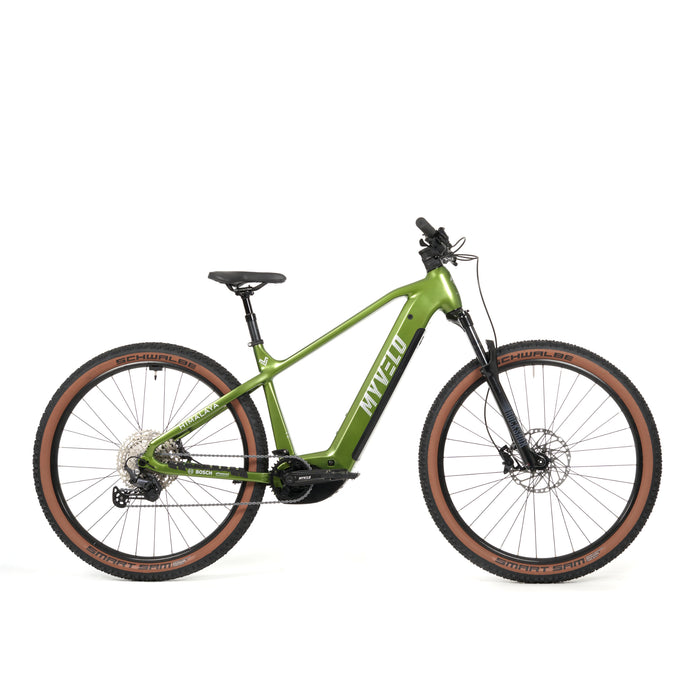
Himalaya E-MTB
incl. FREE shipping & free returns
📣 Only for a short time 200€ savings
📦 Delivery end of August

Mountain biking is fun, keeps you fit, and gets you out into nature – but beginners, in particular, are quick to make common mistakes that not only spoil the fun but, in the worst case, lead to accidents. In this article, we'll show you the most common mountain biking mistakes – and how to avoid them.
Von David Weichel |
3 minutes read time

A common mistake is choosing the wrong size mountain bike. A frame that's too small or too large can lead to back pain, knee pain, or unsafe handling.
🔧 Tip: When purchasing, have the right frame size calculated – and make sure you choose the right seat height. You'll find a practical overview in our mountain bike guide.
Too little air = spongy handling. Too much air = little grip. Many people ride with standard settings without considering the terrain or body weight.
🔧 Tip: Follow the tire sidewall recommendations and adjust the air pressure accordingly. For rough terrain, lower pressure is often better. If you ride trails frequently, you should also consider tubeless systems.
Many riders underestimate technical sections or brake too late. The result: Locked tires, poor line selection—and sometimes a fall over the handlebars.
🔧 Tip: Practice your basic position, active weight shifting, and eye tracking. And: Ride with foresight! Riding technique courses or trail parks with practice sections can help here.
A common beginner's mistake is abruptly applying both brakes — often while cornering. This can quickly lead to loss of control or skidding.
🔧 Tip: Brake carefully and with feeling – about 70% front, 30% rear. In corners: Brake first, then let it roll.
Riding on technical trails with the seat post permanently extended results in a high center of gravity and difficulty moving. A dropper post is often a game changer.
🔧 Tip: If you don't have one, read our article "Retrofitting a Dropper Post – How to Use a Dropper Post." It will dramatically improve your riding performance – especially downhill!
Too soft? You lose energy. Too hard? You lose traction. Many people drive with the factory settings – and thus sacrifice comfort and safety.
🔧 Tip: Use the "sag" (negative travel) to adjust your suspension to your weight. We explain exactly what sag, rebound, and compression mean in the article "Adjusting MTB Suspension."
An unkempt bike shifts worse, brakes worse — and is annoying. Not to mention the increased wear and tear.
🔧 Tip: After every muddy ride, give it a quick rinse, dry the chain, and oil it. And every few months: perform a thorough inspection, ideally with a checklist.
So logical – and yet you see many people on the trail without helmets. Gloves and goggles aren't just for decoration, they're for protection.
🔧 Tip: Invest in a good helmet with the MIPS system. Gloves and goggles will help protect against falls and dust. Your skin (and teeth) will thank you.
Jumping straight into a black downhill line without training? That rarely goes well. Overestimation is a classic trait – especially on group rides.
🔧 Tip: Get used to it. Know your limits. New trails? Ride at a moderate pace first.
Long tour, strong sun – and nothing with you? Bad idea. Without energy and fluids, concentration – and thus safety – dwindles.
🔧 Tip: Always carry bars, gels, or a banana with you. Drinking 1 liter per hour in hot weather isn't a luxury, it's a necessity.
Nobody is perfect — and everyone makes mistakes. But if you follow the points above, you'll be safer, more efficient, and more relaxed on your bike.
👉 Want more tips, buying advice, and bikes for every level? Check out our mountain bike overview – here you'll find the right bike for your riding style!